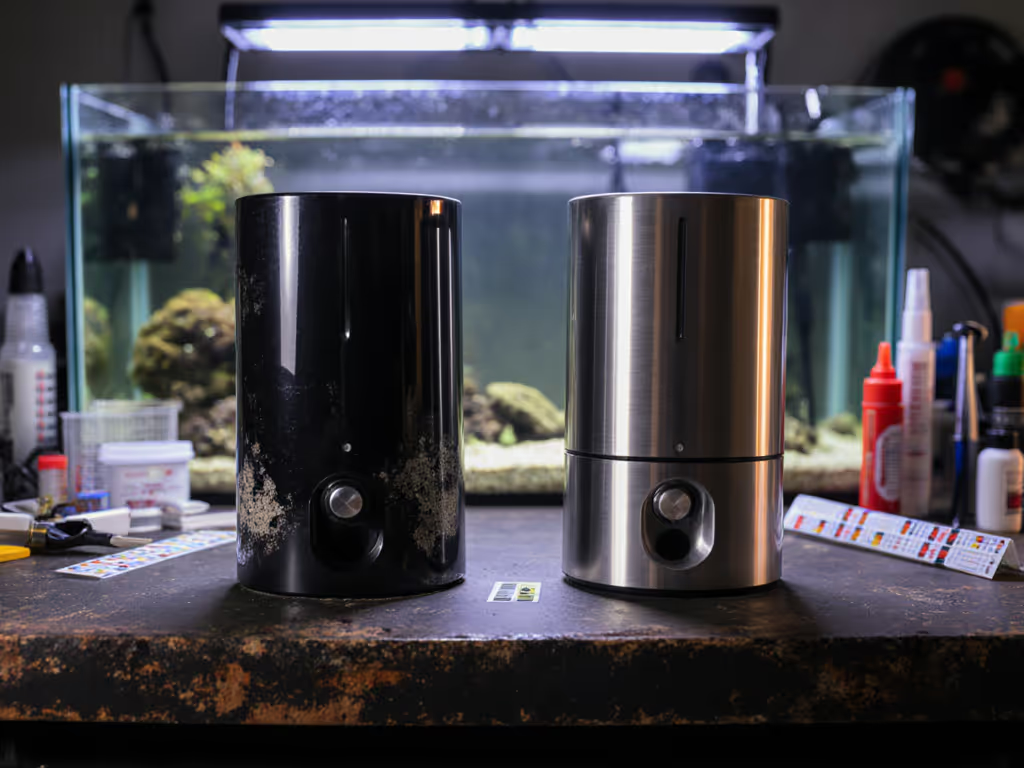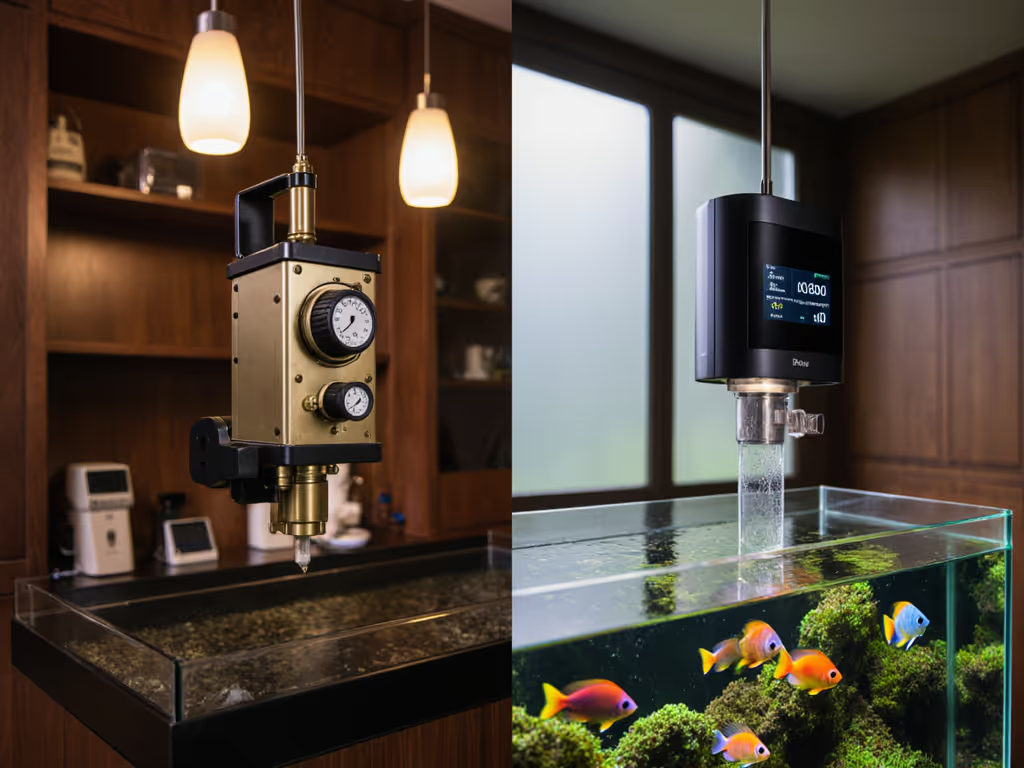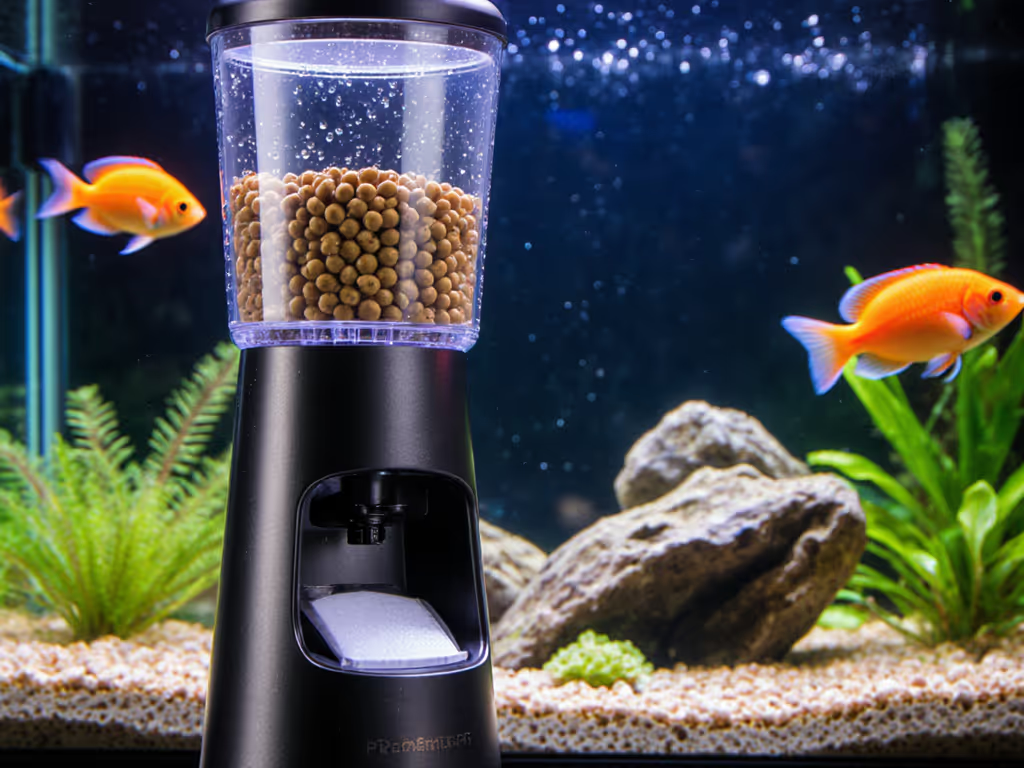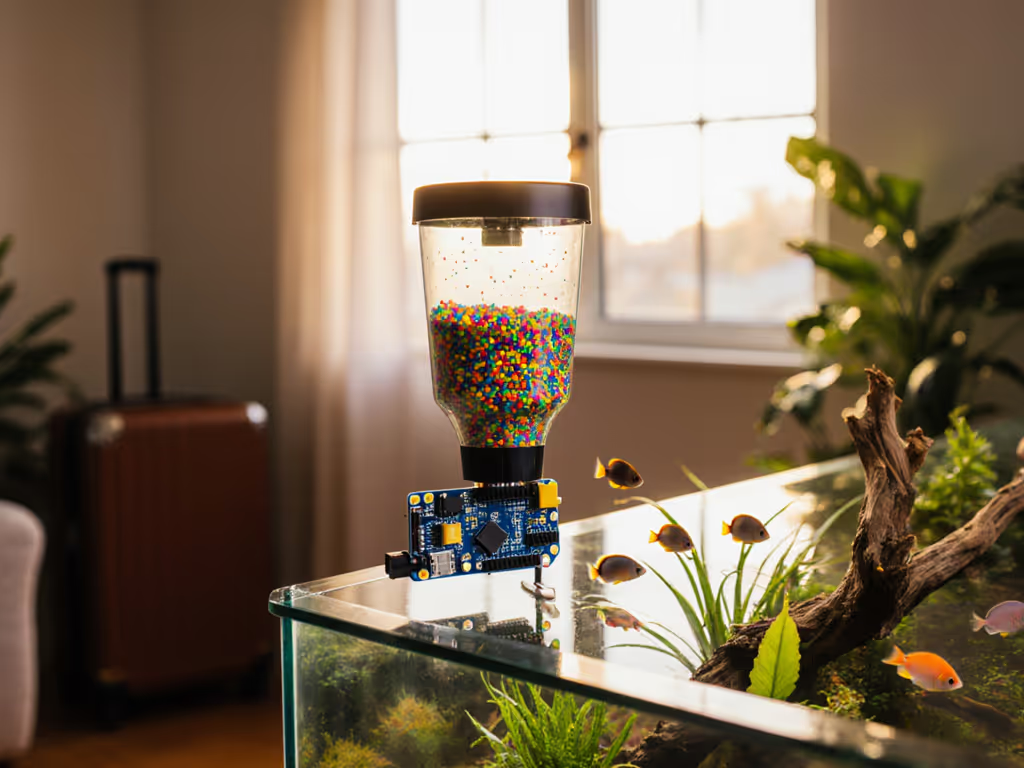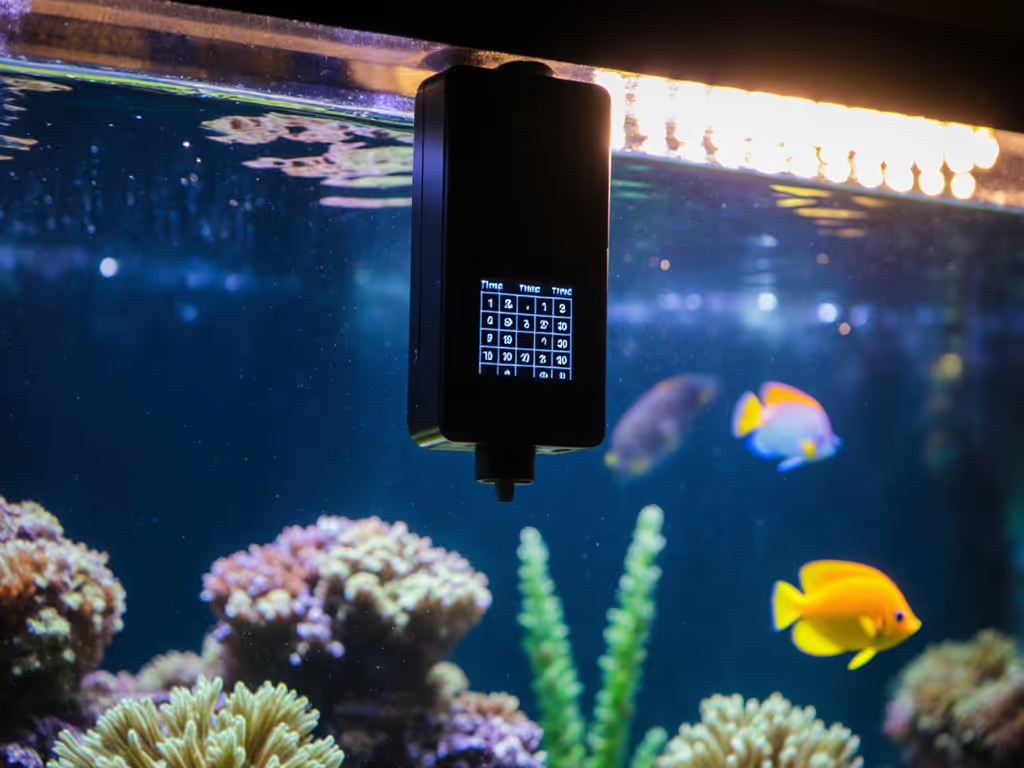
Fish Feeder Capacity Guide: Right Size for Your Tank

Choosing fish feeder size isn't just about convenience, it's foundational to your aquarium's health. This fish feeder capacity guide demystifies the process so your routine supports thriving fish, not stress. Observation-led, simple routines keep fish thriving and reduce keeper stress, a truth I've seen transform countless aquariums from chaotic to calm. When we match feeding tools to your tank's unique needs, you gain peace of mind whether you're at work or away on vacation. Let's explore how to select capacity that honors your fish's biology while fitting your life.

Why Feeder Capacity Matters More Than You Think
Many experienced keepers assume "bigger is better" for feeders, but oversized capacity causes as many problems as undersized units. Overfilling leads to humidity exposure, clumping food, and inconsistent dispensing (especially critical for flake foods that degrade rapidly). Conversely, under-capacity feeders require frequent refills, disrupting your carefully balanced routine. The sweet spot depends on three factors:
- Tank volume (actual water capacity, not nominal size)
- Fish bioload (waste production based on species)
- Absence duration (vacation length)
Remember: Your fish don't need "more" food, they need precisely what they'll consume. Start small, observe closely, let the fish teach you.
Calculating Your Base Capacity
First, determine your actual water volume. Subtract 10% from your tank's nominal size (e.g., a "55-gallon" holds ~50 gallons with substrate and decor). Then apply the bioload-adjusted rule:
- Slim-bodied fish (tetras, rasboras): 1 level measuring spoon per 20 gallons daily
- Full-bodied fish (goldfish, cichlids): 1 level spoon per 30 gallons daily
- Mixed communities: Use the most waste-producing species as your guide
Example: A 50-gallon tank with 5 angelfish (full-bodied) needs only 1.67 level spoons daily. For a 10-day trip, you'd need capacity for 16.7 spoons, but subtract 20% for food degradation during extended use, totaling ~13.3 spoons.
This approach prevents the nutrient overload that causes algae blooms and ammonia spikes (common pain points even for seasoned hobbyists). Never base calculations on "gallon per inch" alone; body mass matters more than length for bioload.
Matching Feeder Type to Your Aquarium Scale
Small Tank Fish Feeder Solutions
Nano and desktop tanks (5-20 gallons) often suffer from over-portioning disasters. A single misplaced pinch of flakes can cloud water within hours. For these setups:
- Choose feeders with micro-adjustable settings (as small as 0.1g)
- Opt for separate compartments for specialty foods (e.g., frozen blocks)
- Prioritize moisture-sealed chambers to protect tiny food quantities
Pro Tip: If housing delicate species like bettas or dwarf shrimp, test your feeder with dry runs. Many keepers don't realize their "small tank fish feeder" dispenses 3x the needed amount until they see uneaten food clouding the water.
Large Aquarium Feeder Strategies
For 55+ gallon systems, capacity consistency becomes critical. These tanks often house multiple species with varying needs, so look for:
- Dual-hopper systems to separate protein-rich and vegetable-based foods
- Calendar-based scheduling (e.g., skip feeding on Wednesdays for goldfish tanks)
- Degradation compensation features that reduce portions after day 5
I recently advised a client with a 125-gallon community. His "large aquarium feeder" poured identical amounts daily, flooding the tank with excess after the first three days. Switching to a model that tapers portions prevented recurring nitrate spikes. Your fish's wellbeing hinges on matching capacity to biological reality, not just tank dimensions.
Vacation Fish Feeder Selection: Avoiding Crisis
"Vacation mode" is where most feeder failures occur. How much food feeder capacity you need depends on science, not guesswork.
For a week-long absence, see our 7-day vacation feeder reliability comparison to understand which options hold up over time.
| Absence Duration | Capacity Adjustment | Critical Safeguard |
|---|---|---|
| 3-5 days | 100% of calculated need | Check humidity seals |
| 6-10 days | 80% of calculated need | Use gel-based foods |
| 11+ days | 60% of calculated need | Pair with live plants |
Why the reduction? Food exposed to aquarium humidity loses nutritional value and increases dissolved organics. Extended trips require proactive degradation management, not just bulk capacity. For a 30-gallon planted tank with medium bioload planning a 9-day trip:
- Base daily need: 1.5 spoons
- Total for 9 days: 13.5 spoons
- Adjusted for degradation (80%): 10.8 spoons
Never exceed your feeder's 70% capacity mark. Expansion from humidity can jam mechanisms (a frequent cause of "vacation fish feeder" failures).
Troubleshooting Common Capacity Mistakes
When Water Quality Deteriorates
If parameters shift during automated feeding, Pause, watch, then adjust. Cloudy water or rising nitrates typically indicate:
- Capacity set 20-30% too high for your bioload
- Food type incompatible with feeder mechanism (e.g., oily pellets in dry-food units)
- Humidity compromising food integrity
When Fish Show Stress Signs
Lethargy or unusual hiding often signals nutritional imbalance from improper portioning. Check:
- Whether feeder dispenses the same amount whether full or nearly empty
- If vegetable-based foods are separating from pellets
- Whether timed feeds conflict with natural feeding rhythms (e.g., diurnal vs nocturnal species)
I recall a neighbor's child crying when her guppies vanished in cloudy water, she'd loved them too much with flakes. We restored clarity not by feeding more, but by restraining portions and matching capacity to their actual needs. Her joy returned when she saw her fish thriving through observation, not excess.
Final Wisdom: Your Path to Confident Automation
Choosing fish feeder size becomes intuitive when you center your fish's signals. Measure your tank's true capacity, calculate bioload-adjusted needs, then select a unit holding 10 to 15% extra for safety margins. Remember that small tank fish feeder requirements differ radically from large aquarium feeder demands, not just in volume, but in precision.
Most importantly: Let your fish guide you. Watch their behavior after automated feeds. Note water clarity changes. Adjust incrementally. When you Pause, watch, then adjust, you transform feeding from a chore into a meaningful connection with your aquatic ecosystem.
Ready to deepen your understanding? Explore our free "Observation Journal Template" at local aquarium clubs, where fellow keepers share how restraint becomes the deepest form of care.

